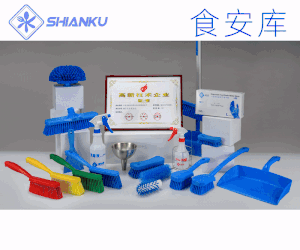近日,湖北洪山實驗室、作物遺傳改良國家重點實驗室、生命科學技術(shù)學院的蛋白質(zhì)科學研究團隊蛋白質(zhì)動態(tài)學課題組在Nature Communications雜志在線發(fā)表題為“Mechanistic insights into the regulation of plant phosphate homeostasis by the rice SPX2 – PHR2 complex”的研究論文,揭示了水稻SPX2– PHR2復合物感知磷信號、調(diào)控磷穩(wěn)態(tài)的分子機制。
磷是影響生命體生長發(fā)育、決定作物產(chǎn)量的重要營養(yǎng)元素。農(nóng)業(yè)生產(chǎn)上,為了增產(chǎn),磷肥的過度使用引發(fā)了系列環(huán)境問題。研究作物的磷穩(wěn)態(tài)維持機制,具有重要的理論與實踐意義。已有研究表明:低磷條件下,水稻磷穩(wěn)態(tài)調(diào)控的核心轉(zhuǎn)錄因子–PHR2通過二聚化結(jié)合順式調(diào)控元件(P1BS),激活一系列磷饑餓響應基因的表達,促進磷的吸收與利用;高磷條件下,SPX2蛋白感知磷信號,進而結(jié)合并抑制PHR2的轉(zhuǎn)錄活性,維持磷穩(wěn)態(tài),避免磷中毒。但SPX2如何感知和傳遞磷信號的具體分子機制,尚不清楚。
動態(tài)學題組采用整合結(jié)構(gòu)生物學策略,聯(lián)用多種生物物理技術(shù)手段,綜合結(jié)構(gòu)基礎與動態(tài)分析,揭示了SPX2受體感受磷信號分子–磷酸肌醇(InsP6)、傳遞磷信號進而調(diào)控水稻磷穩(wěn)態(tài)的分子機制: SPX2通過寡聚狀態(tài)的動態(tài)變化,以獨特的結(jié)構(gòu)域交互構(gòu)象感知InsP6信號,并以dimer of dimer的方式結(jié)合PHR2;這種獨特的結(jié)合方式,空間排斥了PHR2結(jié)合PIBS,并打破了PHR2的二聚化,進而抑制PHR2的轉(zhuǎn)錄活性,維持磷穩(wěn)態(tài)。該研究從機制上闡明了水稻磷動態(tài)平衡的分子基礎,對水稻農(nóng)藝性狀的遺傳改良和合理施肥具有指導意義,為因地制宜的選育不同磷酸鹽吸收能力的水稻品種提供了重要參考。
生科院官澤源博士、張群霞博士和張治飛同學為該論文共同第一作者,劉主教授為該論文通訊作者。華中農(nóng)業(yè)大學校級蛋白質(zhì)平臺為該研究提供了強有力的支持,樣品的衍射和散射數(shù)據(jù)在上海同步輻射光源收集。該研究受到了科技部、國家自然科學基金委、校自主創(chuàng)新基金的資助。官澤源博士特別感謝博士后創(chuàng)新人才計劃、博士后面上基金、生科院博士后百川計劃的支持。
【英文摘要】
Phosphate (Pi) starvation response (PHR) transcription factors play key roles in plant Pi homeostasis maintenance. They are negatively regulated by stand-alone SPX proteins, cellular receptors for inositol pyrophosphate (PP-InsP) nutrient messengers. How PP-InsP-bound SPX interacts with PHRs is poorly understood. Here, we report crystal structures of the rice SPX2/InsP6/PHR2 complex and of the PHR2 DNA binding (MYB) domain in complex with target DNA at resolutions of 3.1?? and 2.7??, respectively. In the SPX2/InsP6/PHR2 complex, the signalling-active SPX2 assembles into a domain-swapped dimer conformation and binds two copies of PHR2, targeting both its coiled-coil (CC) oligomerisation domain and MYB domain. Our results reveal that the SPX2 senses PP-InsPs to inactivate PHR2 by establishing severe steric clashes with the PHR2 MYB domain, preventing DNA binding, and by disrupting oligomerisation of the PHR2 CC domain, attenuating promoter binding. Our findings rationalize how PP-InsPs activate SPX receptor proteins to target PHR family transcription factors.
論文鏈接:https://www.nature.com/articles/s41467-022-29275-8











 地區(qū):
地區(qū):






 魯公網(wǎng)安備 37060202000128號
魯公網(wǎng)安備 37060202000128號



